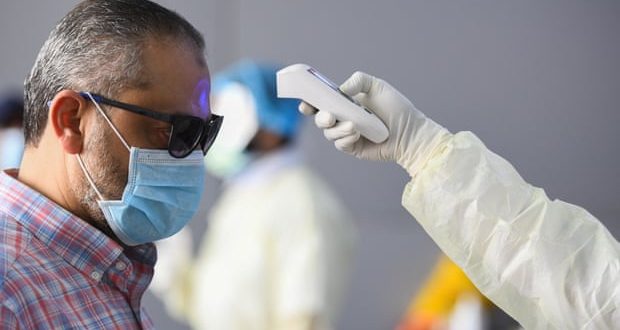Findings mean that isolating people once they start to feel ill is less effective than hoped
Many coronavirus infections may be spread by people who have recently caught the virus and have not yet begun to show symptoms, scientists have found.
An analysis of infections in Singapore and Tianjin in China revealed that two-thirds and three-quarters of people respectively appear to have caught it from others who were incubating the virus but still symptom-free.
The finding has dismayed infectious disease researchers as it means that isolating people once they start to feel ill will be far less effective at slowing the pandemic than had been hoped.
“This is one of the first things we were worried about when the outbreak began,” said Steven Riley, professor of infectious disease dynamics at Imperial College London, who was not involved in the work. “It was certainly unhoped for. This is one thing we really didn’t want to go this way.”
Researchers in Belgium and the Netherlands drew on data from outbreaks in Singapore and Tianjin to work out the “generation interval” for Covid-19. The generation interval is the time between one person getting infected and them infecting another. The figure is valuable for estimating the speed at which an outbreak will unfold.
The mean generation interval was 5.2 days in the Singapore cluster and 3.95 days in the China cluster, according to the analysis which is under review at an infectious disease journal. The scientists went on to calculate what proportion of infections were likely spread from people who were still incubating the virus and had yet to develop symptoms.
There are uncertainties in the figures because the scientists did not have precise information on who infected whom in the two clusters of disease. But even the lowest estimates show there was substantial transmission of coronavirus from people who had yet to fall ill.
In the Singapore cluster, between 45% and 84% of infections appeared to come from people incubating the virus. In China, the figures ranged from 65% to as much as 87%.
Tapiwa Ganyani, a researcher on the team, said the numbers suggest that isolating sick people would not be enough to quell the outbreak. “It is unlikely that these measures alone will suffice to control the Covid-19 epidemic,” he said. “Additional measures, such as social distancing, are required.”
The finding confirms recent comments from Maria Van Kerkhove, head of the World Health Organization’s emerging diseases and zoonoses unit, who said preliminary data showed patients shed more virus in the early stages of the disease, including when presymptomatic. A separate study that tracked nine patients in Germany found that levels of the virus might already be in decline when symptoms come on.
“The number helps us estimate how likely certain kinds of public health interventions are to work,” said Riley. “If you ask people to go home when they feel ill and they have infected half the people they are going to infect before they feel ill, then you know you are not going to get rid of those transmissions.” But he said it was still important to isolate those with symptoms, even if it would not be enough to stop the outbreak.
Ganyani stressed that the study looked at outbreaks where quarantine and other containment measures were already in place, which inflates the proportion of infections from presymptomatic people. “If control measures are less strict you would expect this estimate to be lower, but the number of secondary cases to be higher on average,” he said.
Rowland Kao, who studies infectious disease dynamics at the University of Edinburgh, said: “One of the factors that has distinguished this coronavirus pandemic from the Sars epidemic in 2003, is that Sars was infectious only after the development of clinical signs, which made it relatively easier to control. For the current pandemic, from very early on it was suspected that a substantial number of transmissions were arising before clinical signs appeared.
The Guardian
 Lebanese Ministry of Information
Lebanese Ministry of Information



